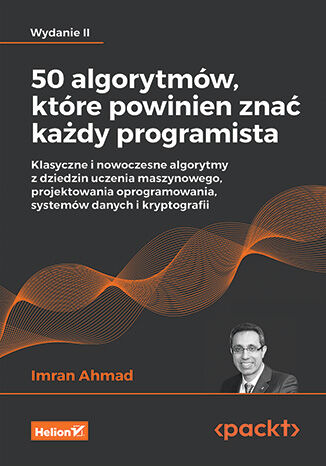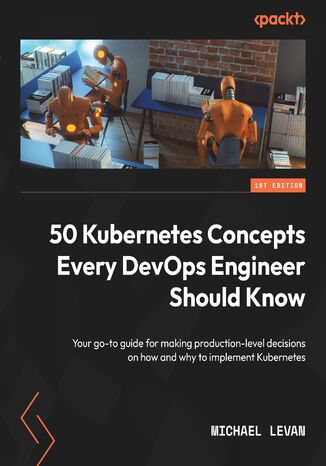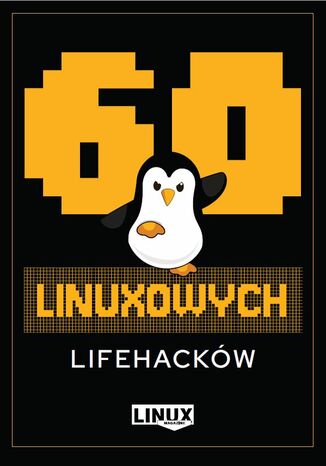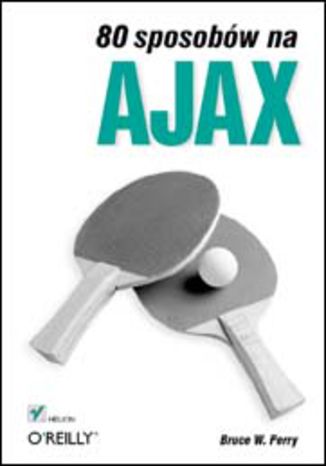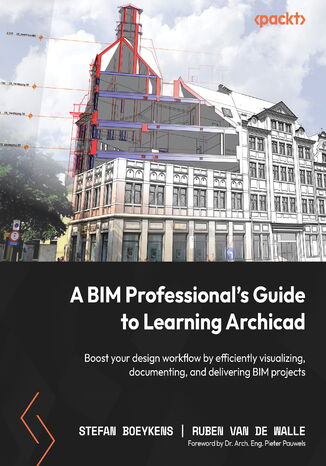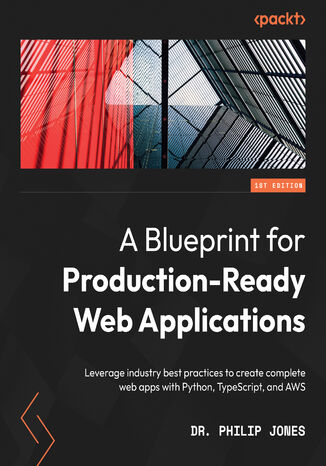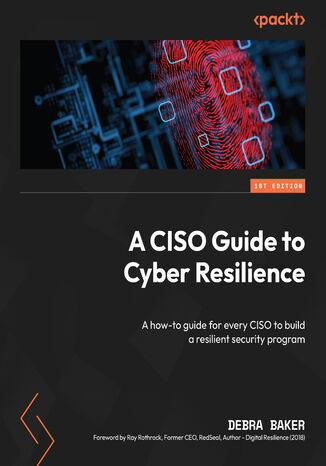Kategorie
Ebooki
-
Biznes i ekonomia
- Bitcoin
- Bizneswoman
- Coaching
- Controlling
- E-biznes
- Ekonomia
- Finanse
- Giełda i inwestycje
- Kompetencje osobiste
- Komputer w biurze
- Komunikacja i negocjacje
- Mała firma
- Marketing
- Motywacja
- Multimedialne szkolenia
- Nieruchomości
- Perswazja i NLP
- Podatki
- Polityka społeczna
- Poradniki
- Prezentacje
- Przywództwo
- Public Relation
- Raporty, analizy
- Sekret
- Social Media
- Sprzedaż
- Start-up
- Twoja kariera
- Zarządzanie
- Zarządzanie projektami
- Zasoby ludzkie (HR)
-
Dla dzieci
-
Dla młodzieży
-
Edukacja
-
Encyklopedie, słowniki
-
E-prasa
- Architektura i wnętrza
- BHP
- Biznes i Ekonomia
- Dom i ogród
- E-Biznes
- Ekonomia i finanse
- Ezoteryka
- Finanse
- Finanse osobiste
- Firma
- Fotografia
- Informatyka
- Kadry i płace
- Kobieca
- Komputery, Excel
- Księgowość
- Kultura i literatura
- Naukowe i akademickie
- Ochrona środowiska
- Opiniotwórcze
- Oświata
- Podatki
- Podróże
- Psychologia
- Religia
- Rolnictwo
- Rynek książki i prasy
- Transport i Spedycja
- Zdrowie i uroda
-
Historia
-
Informatyka
- Aplikacje biurowe
- Bazy danych
- Bioinformatyka
- Biznes IT
- CAD/CAM
- Digital Lifestyle
- DTP
- Elektronika
- Fotografia cyfrowa
- Grafika komputerowa
- Gry
- Hacking
- Hardware
- IT w ekonomii
- Pakiety naukowe
- Podręczniki szkolne
- Podstawy komputera
- Programowanie
- Programowanie mobilne
- Serwery internetowe
- Sieci komputerowe
- Start-up
- Systemy operacyjne
- Sztuczna inteligencja
- Technologia dla dzieci
- Webmasterstwo
-
Inne
-
Języki obce
-
Kultura i sztuka
-
Lektury szkolne
-
Literatura
- Antologie
- Ballada
- Biografie i autobiografie
- Dla dorosłych
- Dramat
- Dzienniki, pamiętniki, listy
- Epos, epopeja
- Esej
- Fantastyka i science-fiction
- Felietony
- Fikcja
- Humor, satyra
- Inne
- Klasyczna
- Kryminał
- Literatura faktu
- Literatura piękna
- Mity i legendy
- Nobliści
- Nowele
- Obyczajowa
- Okultyzm i magia
- Opowiadania
- Pamiętniki
- Podróże
- Poemat
- Poezja
- Polityka
- Popularnonaukowa
- Powieść
- Powieść historyczna
- Proza
- Przygodowa
- Publicystyka
- Reportaż
- Romans i literatura obyczajowa
- Sensacja
- Thriller, Horror
- Wywiady i wspomnienia
-
Nauki przyrodnicze
-
Nauki społeczne
-
Podręczniki szkolne
-
Popularnonaukowe i akademickie
- Archeologia
- Bibliotekoznawstwo
- Filmoznawstwo
- Filologia
- Filologia polska
- Filozofia
- Finanse i bankowość
- Geografia
- Gospodarka
- Handel. Gospodarka światowa
- Historia i archeologia
- Historia sztuki i architektury
- Kulturoznawstwo
- Lingwistyka
- Literaturoznawstwo
- Logistyka
- Matematyka
- Medycyna
- Nauki humanistyczne
- Pedagogika
- Pomoce naukowe
- Popularnonaukowa
- Pozostałe
- Psychologia
- Socjologia
- Teatrologia
- Teologia
- Teorie i nauki ekonomiczne
- Transport i spedycja
- Wychowanie fizyczne
- Zarządzanie i marketing
-
Poradniki
-
Poradniki do gier
-
Poradniki zawodowe i specjalistyczne
-
Prawo
- BHP
- Historia
- Kodeks drogowy. Prawo jazdy
- Nauki prawne
- Ochrona zdrowia
- Ogólne, kompendium wiedzy
- Podręczniki akademickie
- Pozostałe
- Prawo budowlane i lokalowe
- Prawo cywilne
- Prawo finansowe
- Prawo gospodarcze
- Prawo gospodarcze i handlowe
- Prawo karne
- Prawo karne. Przestępstwa karne. Kryminologia
- Prawo międzynarodowe
- Prawo międzynarodowe i zagraniczne
- Prawo ochrony zdrowia
- Prawo oświatowe
- Prawo podatkowe
- Prawo pracy i ubezpieczeń społecznych
- Prawo publiczne, konstytucyjne i administracyjne
- Prawo rodzinne i opiekuńcze
- Prawo rolne
- Prawo socjalne, prawo pracy
- Prawo Unii Europejskiej
- Przemysł
- Rolne i ochrona środowiska
- Słowniki i encyklopedie
- Zamówienia publiczne
- Zarządzanie
-
Przewodniki i podróże
- Afryka
- Albumy
- Ameryka Południowa
- Ameryka Środkowa i Północna
- Australia, Nowa Zelandia, Oceania
- Austria
- Azja
- Bałkany
- Bliski Wschód
- Bułgaria
- Chiny
- Chorwacja
- Czechy
- Dania
- Egipt
- Estonia
- Europa
- Francja
- Góry
- Grecja
- Hiszpania
- Holandia
- Islandia
- Litwa
- Łotwa
- Mapy, Plany miast, Atlasy
- Miniprzewodniki
- Niemcy
- Norwegia
- Podróże aktywne
- Polska
- Portugalia
- Pozostałe
- Przewodniki po hotelach i restauracjach
- Rosja
- Rumunia
- Słowacja
- Słowenia
- Szwajcaria
- Szwecja
- Świat
- Turcja
- Ukraina
- Węgry
- Wielka Brytania
- Włochy
-
Psychologia
- Filozofie życiowe
- Kompetencje psychospołeczne
- Komunikacja międzyludzka
- Mindfulness
- Ogólne
- Perswazja i NLP
- Psychologia akademicka
- Psychologia duszy i umysłu
- Psychologia pracy
- Relacje i związki
- Rodzicielstwo i psychologia dziecka
- Rozwiązywanie problemów
- Rozwój intelektualny
- Sekret
- Seksualność
- Uwodzenie
- Wygląd i wizerunek
- Życiowe filozofie
-
Religia
-
Sport, fitness, diety
-
Technika i mechanika
Audiobooki
-
Biznes i ekonomia
- Bitcoin
- Bizneswoman
- Coaching
- Controlling
- E-biznes
- Ekonomia
- Finanse
- Giełda i inwestycje
- Kompetencje osobiste
- Komunikacja i negocjacje
- Mała firma
- Marketing
- Motywacja
- Nieruchomości
- Perswazja i NLP
- Podatki
- Polityka społeczna
- Poradniki
- Prezentacje
- Przywództwo
- Public Relation
- Sekret
- Social Media
- Sprzedaż
- Start-up
- Twoja kariera
- Zarządzanie
- Zarządzanie projektami
- Zasoby ludzkie (HR)
-
Dla dzieci
-
Dla młodzieży
-
Edukacja
-
Encyklopedie, słowniki
-
E-prasa
-
Historia
-
Informatyka
-
Inne
-
Języki obce
-
Kultura i sztuka
-
Lektury szkolne
-
Literatura
- Antologie
- Ballada
- Biografie i autobiografie
- Dla dorosłych
- Dramat
- Dzienniki, pamiętniki, listy
- Epos, epopeja
- Esej
- Fantastyka i science-fiction
- Felietony
- Fikcja
- Humor, satyra
- Inne
- Klasyczna
- Kryminał
- Literatura faktu
- Literatura piękna
- Mity i legendy
- Nobliści
- Nowele
- Obyczajowa
- Okultyzm i magia
- Opowiadania
- Pamiętniki
- Podróże
- Poezja
- Polityka
- Popularnonaukowa
- Powieść
- Powieść historyczna
- Proza
- Przygodowa
- Publicystyka
- Reportaż
- Romans i literatura obyczajowa
- Sensacja
- Thriller, Horror
- Wywiady i wspomnienia
-
Nauki przyrodnicze
-
Nauki społeczne
-
Popularnonaukowe i akademickie
-
Poradniki
-
Poradniki zawodowe i specjalistyczne
-
Prawo
-
Przewodniki i podróże
-
Psychologia
- Filozofie życiowe
- Komunikacja międzyludzka
- Mindfulness
- Ogólne
- Perswazja i NLP
- Psychologia akademicka
- Psychologia duszy i umysłu
- Psychologia pracy
- Relacje i związki
- Rodzicielstwo i psychologia dziecka
- Rozwiązywanie problemów
- Rozwój intelektualny
- Sekret
- Seksualność
- Uwodzenie
- Wygląd i wizerunek
- Życiowe filozofie
-
Religia
-
Sport, fitness, diety
-
Technika i mechanika
Kursy video
-
Bazy danych
-
Big Data
-
Biznes, ekonomia i marketing
-
Cyberbezpieczeństwo
-
Data Science
-
DevOps
-
Dla dzieci
-
Elektronika
-
Grafika/Wideo/CAX
-
Gry
-
Microsoft Office
-
Narzędzia programistyczne
-
Programowanie
-
Rozwój osobisty
-
Sieci komputerowe
-
Systemy operacyjne
-
Testowanie oprogramowania
-
Urządzenia mobilne
-
UX/UI
-
Web development
-
Zarządzanie
Podcasty
- Ebooki
- Informatyka
Informatyka
Wiedza o algorytmach jest niezbędna przy rozwiązywaniu problemów programistycznych i prowadzeniu złożonych obliczeń. Każdy programista powinien dobrze znać algorytmy, musi też umieć je zaprojektować, modyfikować i stosować. Niezależnie od tego, czy zajmujesz się uczeniem maszynowym, kwestiami bezpieczeństwa, czy inżynierią danych, rzetelne zrozumienie algorytmów jest Ci bardzo potrzebne. Dzięki tej książce nauczysz się stosować algorytmy w praktycznych sytuacjach i zrozumiesz mechanizmy ich działania. Liczne przykłady pozwolą Ci się zapoznać z kilkoma sposobami ich projektowania i implementacji. Następnie poznasz algorytm określania pozycji stron w wynikach wyszukiwarek internetowych, związane z nimi grafy i algorytmy uczenia maszynowego, a także logikę. Zaznajomisz się ponadto z nowoczesnymi modelami sekwencyjnymi i ich wariantami, jak również algorytmami, metodykami i architekturami implementacji dużych modeli językowych, takich jak ChatGPT. W ostatniej części tego przewodnika znajdziesz opis technik przetwarzania równoległego, przydatnego w zadaniach wymagających dużej mocy obliczeniowej. W książce między innymi: projektowanie algorytmów przeznaczonych do złożonych zadań sieci neuronowe i techniki uczenia głębokiego struktury danych i algorytmy dostępne w bibliotekach Pythona algorytm grafowy służący do wykrywania oszustw za pomocą analizy sieciowej najnowocześniejsze algorytmy przetwarzania języka naturalnego tworzenie systemu rekomendacji filmów sekwencyjne modele uczenia maszynowego i nowoczesne modele LLM Algorytmy: klucz do sukcesu w programowaniu!
Kubernetes is a trending topic among engineers, CTOs, CIOs, and other technically sound professionals. Due to its proliferation and importance for all cloud technologies, DevOps engineers nowadays need a solid grasp of key Kubernetes concepts to help their organization thrive.This book equips you with all the requisite information about how Kubernetes works and how to use it for the best results. You’ll learn everything from why cloud native is important to implementing Kubernetes clusters to deploying applications in production. This book takes you on a learning journey, starting from what cloud native is and how to get started with Kubernetes in the cloud, on-premises, and PaaS environments such as OpenShift. Next, you’ll learn about deploying applications in many ways, including Deployment specs, Ingress Specs, and StatefulSet specs. Finally, you’ll be comfortable working with Kubernetes monitoring, observability, and security. Each chapter of 50 Kubernetes Concepts Every DevOps Engineer Should Know is built upon the previous chapter, ensuring that you develop practical skills as you work through the code examples in GitHub, allowing you to follow along while giving you practical knowledge.By the end of this book, you’ll be able to implement Kubernetes in any environment, whether it’s an existing environment, a greenfield environment, or your very own lab running in the cloud or your home.
W tym kieszonkowym poradniku znajdziesz: 12 gotowych skryptów - kopiuj, modyfikuj i automatyzuj pracę jak profesjonalista! 5 praktycznych ćwiczeń - nauczysz się krok po kroku tworzyć własne automatyzacje. Omówienie wideo - zobacz, jak działają skrypty i wykorzystaj je natychmiast. Porady, jak unikać najczęstszych błędów Zautomatyzuj tworzenie kopii zapasowych, monitorowanie systemu, zarządzanie plikami i wiele więcej. Nie trać godzin na nudne zadania - pozwól, by Linux pracował za Ciebie
70 sposobów na rozkochanie KLIENTA... w Twoim e-biznesie
Klient. Czyż nie jest to najpiękniejsze słowo na świecie? E-przedsiębiorco! Skoro prowadzisz swój biznes w sieci, to z pewnością wiesz, jakie są niezbędne składowe Twojego sukcesu: to świetny produkt, sprawny marketing, no i oczywiście dobrze napisane oprogramowanie, dzięki któremu klient będzie mógł sprawnie poruszać się po Twoim e-sklepie, od pierwszego wejrzenia aż po szczęśliwie sfinalizowaną transakcję. Czekaj, czekaj... Czy coś nam po drodze przypadkiem nie umknęło? Jakieś słowo... Ważne słowo. Użyliśmy go, wymieniając warunkowe powodzenia w e-biznesie. Wiem! To słowo to: KLIENT. Pisany dużą literą, a nawet samymi dużymi literami, ponieważ to właśnie on, Klient, stanowi prawdziwy klucz do Twojego szczęścia. Możesz mieć świetną ofertę, najnowocześniejsze, najskuteczniejsze narzędzia marketingowe, najbardziej intuicyjny sklep w sieci, ale to i tak nic, jeśli Twój poziom obsługi Klienta leży i kwiczy. Paweł Krzyworączka prowadzi swój internetowy biznes od roku 2008 i od tego czasu z prawdziwą pasją obserwuje dwustronne relacje między sprzedającymi i kupującymi, na przemian jako przedstawiciel jednej i drugiej strony. Na tej podstawie wciąż udoskonala obsługę Klienta we własnej firmie, starając się eliminować błędy, które zauważa u innych, ale także wdrażać pozytywne wzorce, jakich sam doświadczył. Chętnie porównuje relację kupujący-sprzedawca do związku miłosnego, zaznaczając przy tym, że to sprzedający musi się bardziej starać, bo to jemu o wiele bardziej zależy. A jak jest z Tobą? Zależy Ci na Twoim Kliencie, czy nie? Wciąż czujesz niedosyt i marzysz skrycie o tym, by zauroczyć, a następnie rozkochać Klienta w Twoim e-biznesie? A może chcesz, by miłość rozkwitła i przekształciła się w związek na całe życie? Jeśli tak, jeśli masz naprawdę poważne plany w stosunku do swoich Klientów, koniecznie sięgnij po książkę Pawła Krzyworączki! Paweł Krzyworączka — absolwent krakowskiej AGH i jej były pracownik ze stopniem naukowym doktora. Od 2008 roku e-przedsiębiorca, pasjonat nowych technologii oraz zagadnień z zakresu psychologii obsługi Klienta. Szeroko rozpowszechnione powiedzenie „nasz Klient, nasz Pan”, rozumie jako: „mój Klient, mój Przyjaciel”. Będąc właścicielem firmy Krzywy.pl, tworzy serwisy internetowe, kampanie e-marketingowe, prowadzi doradztwo, audyty i szkolenia z e-biznesu. Prowadzi bloga o e-biznesie (ebiznesy.pl), jest założycielem i administratorem prawdopodobnie największego polskiego forum e-biznesu (forum.ebiznesy.pl). Prowadzi kilka sklepów internetowych, m.in. tabletoid.pl. Jego życiowym i zawodowym mottem jest nieustanne dążenie do doskonałości. Także w obsłudze Klienta.
Techniki tworzenia nowoczesnych aplikacji internetowych Przygotowywanie wygodnych w obsłudze formularzy Integracja witryny z Google Maps Zarządzanie połączeniami sieciowymi Ajax to nazwa technologii powstałej w wyniku połączenia języka JavaScript, XML oraz kaskadowych arkuszy stylów. Jej wdrożenie pozwala wyeliminować ze stron WWW jedną z ich najbardziej irytujących cech, czyli konieczność przeładowywania zawartości po każdej zmianie. Umiejętne wykorzystanie możliwości Ajaksa sprawia, że aplikacje internetowe przypominają "zwykłe" programy dla systemów Windows lub Mac OS. Dzięki zastosowaniu Ajaksa aplikacja internetowa działa zdecydowanie szybciej, a połączenia z serwerem nie przeszkadzają użytkownikowi w pracy. Łatwiejsza jest także dynamiczna zmiana elementów w różnych częściach strony. Rozwiązania oparte na Ajaksie wprowadzono w wielu dziedzinach, takich jak blogi, narzędzia służące do nauki, newslettery oraz małe portale internetowe. W książce "80 sposobów na Ajax" znajdziesz przykłady zastosowania tej techniki w tworzeniu interesujących i nieszablonowych witryn WWW. Czytając ją, dowiesz się, jak sprawić, aby witryny WWW były bardziej interaktywne, a aplikacje WWW działały dokładnie tak jak aplikacje desktopowe. Nauczysz się korzystać z interfejsów programistycznych witryn Google Maps, Yahoo! Maps i Geo URL oraz obsługiwać sesje i cookies z poziomu Ajaksa. Poznasz również metody weryfikowania poprawności danych wprowadzanych do formularzy oraz techniki łączenia Ajaksa z innymi nowoczesnymi narzędziami, takimi jak Ruby on Rails. Tworzenie interaktywnych formularzy Połączenia z Google Maps i Yahoo! Maps Korzystanie z usługi Geo URL Obsługa plików cookies Przeglądanie kanałów RSS Integracja z aplikacjami sieciowymi napisanymi w Javie Korzystanie z bibliotek Prototype i Rico Połączenie Ajaksa z Ruby on Rails Wykorzystanie biblioteki script.aculo.us do tworzenia efektów wizualnych Twórz szybkie, wydajne i wygodne w obsłudze aplikacje sieciowe.
Stefan Boeykens, Ruben Van de Walle, Dr. Arch. Eng. Pieter Pauwels
A BIM Professional’s Guide to Learning Archicad is a comprehensive introduction to all that Archicad has to offer for creating 3D models, 2D document extracts, and related outputs. This book is not a click-by-click series of recipes, but rather focuses on helping you understand why and how Archicad works by providing realistic examples and expert tips.The book gradually introduces you to Archicad tools using ample examples. It then helps you master its complexity through clear modules, allowing you to start your first project quickly, gain useful skills in subsequent projects, and keep using the book as a source for insights into the software. You’ll start with the basic modeling of construction elements and then move on to adding roofs, stairs, and objects to the project. Next, you’ll dive into basic drafting and 2D views for creating 2D output, and grasp how to use attributes and more advanced modeling tools for designing curtain walls and sites. The concluding chapters will show you how to extract and visualize your data and automate the publishing of your extracts and 2D documents into a variety of output formats.By the end of this book, you’ll have gained a solid understanding of Archicad, how to implement it efficiently in your architectural projects, and how BIM can improve your overall design workflow.
A Blueprint for Production-Ready Web Applications will help you expand upon your coding knowledge and teach you how to create a complete web application. Unlike other guides that focus solely on a singular technology or process, this book shows you how to combine different technologies and processes as needed to meet industry standards.You’ll begin by learning how to set up your development environment, and use Quart and React to create the backend and frontend, respectively. This book then helps you get to grips with managing and validating accounts, structuring relational tables, and creating forms to manage data. As you progress through the chapters, you’ll gain a comprehensive understanding of web application development by creating a to-do app, which can be used as a base for your future projects. Finally, you’ll find out how to deploy and monitor your application, along with discovering advanced concepts such as managing database migrations and adding multifactor authentication.By the end of this web development book, you’ll be able to apply the lessons and industry best practices that you’ve learned to both your personal and work projects, allowing you to further develop your coding portfolio.
This book, written by the CEO of TrustedCISO with 30+ years of experience, guides CISOs in fortifying organizational defenses and safeguarding sensitive data. Analyze a ransomware attack on a fictional company, BigCo, and learn fundamental security policies and controls. With its help, you’ll gain actionable skills and insights suitable for various expertise levels, from basic to intermediate. You’ll also explore advanced concepts such as zero-trust, managed detection and response, security baselines, data and asset classification, and the integration of AI and cybersecurity. By the end, you'll be equipped to build, manage, and improve a resilient cybersecurity program, ensuring your organization remains protected against evolving threats.

